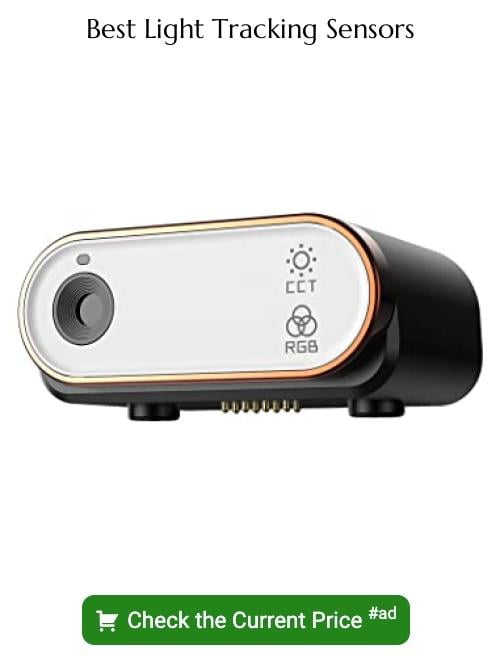Last updated on
Incorporating track lights into your home displays a stylish, modern aesthetic because of their adaptability that grants full control over illumination direction.
Yes, converting can lights to track lights is definitely possible and can improve the flexibility and functionality of your lighting setup substantially.
This task can be accomplished with a track light adapter and a few other tools, making it a relatively simple DIY home project.
The step-by-step guide, alongside a few pro tips and common mistakes to avoid through the process, will ensure you have everything covered.
Let’s dive into the vast opportunity this upgrade presents, enhancing your interior lighting while showcasing your personal décor style.
Key takeaways:
- Converting can lights to track lights enhances flexibility and functionality.
- Can converter kits offer versatility, ease of installation, and durability.
- Different can converter kit options cater to various light fixture weights.
- There are three main types of track lights: linear, monorail, and cable.
- Converting to track lights can improve lighting quality and save costs.
Benefits of Converting a Recessed Light to a Track Light
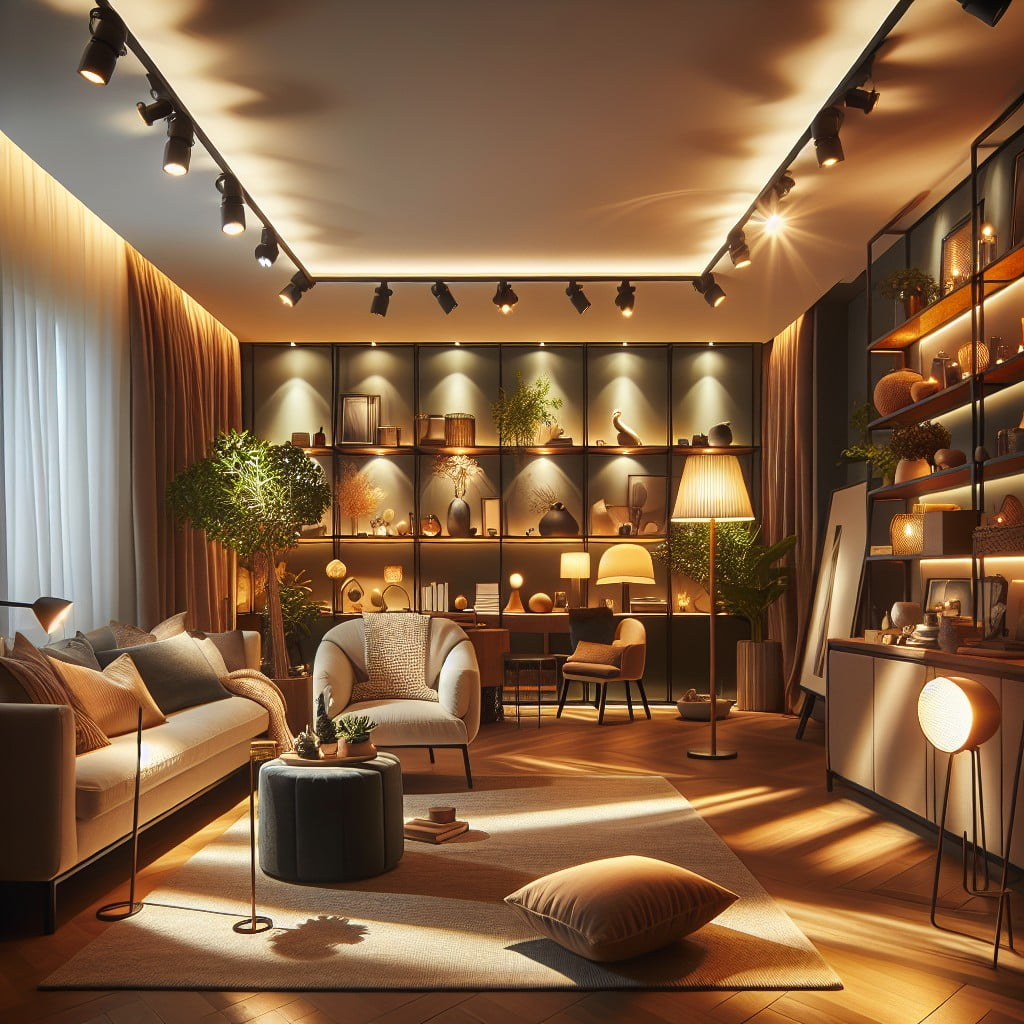
Let’s delve into the many upsides of taking your existing recessed light and switching it over to a track light. First and foremost, track lighting offers unparalleled versatility. It allows you to focus light exactly where you need it, whether it’s highlighting a work of art, illuminating a workspace, or throwing light into a dim corner.
Secondly, there are countless design options. Track lighting comes in a variety of shapes, sizes, and finishes, enabling you to choose a style that fits your decor perfectly. Furthermore, such lighting is highly efficient. Modern track lights often use LED bulbs, which consume less power and have a far longer life than traditional incandescent bulbs.
Lastly, they offer ease of installation. Many recessed light conversion kits offer a simple, tool-free installation process that can be done in minutes without the need for a professional electrician.
Why Convert Recessed Light to Track Light
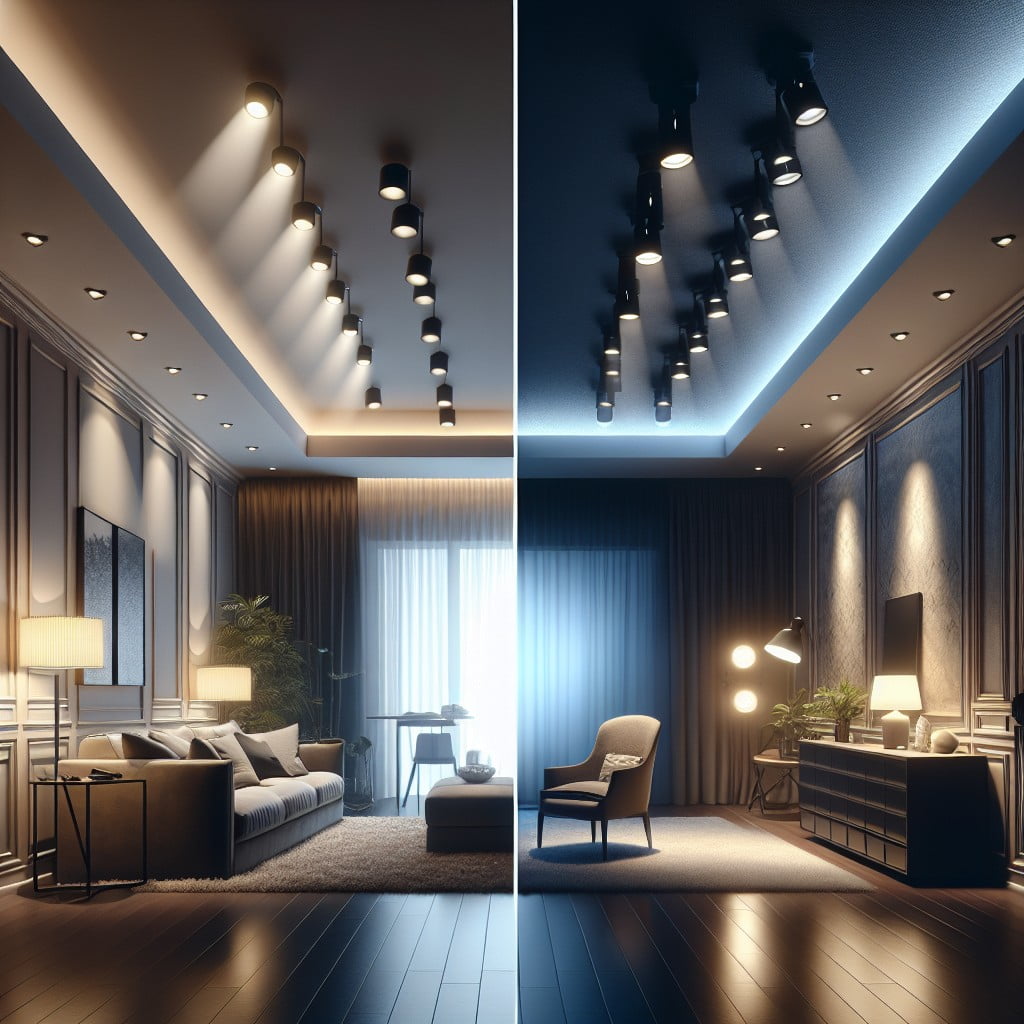
Switching from recessed to track lighting provides versatility, as track lights can be adjusted easily to focus on any area, artwork, or subject in the space. Unlike recessed lights, they offer directional lighting which makes them suitable for task, accent, or general lighting.
The operational cost can also be less due to the lower wattage of bulbs used, in turn, conserving energy. Finally, such conversions are easy DIY projects that don’t require significant home changes, ruling out the need for professional help.
In essence, a can-to-track light conversion can transform the functionality, aesthetics, and energy efficiency of your lighting.
Understanding The Can Converter Recessed Light Conversion Kit
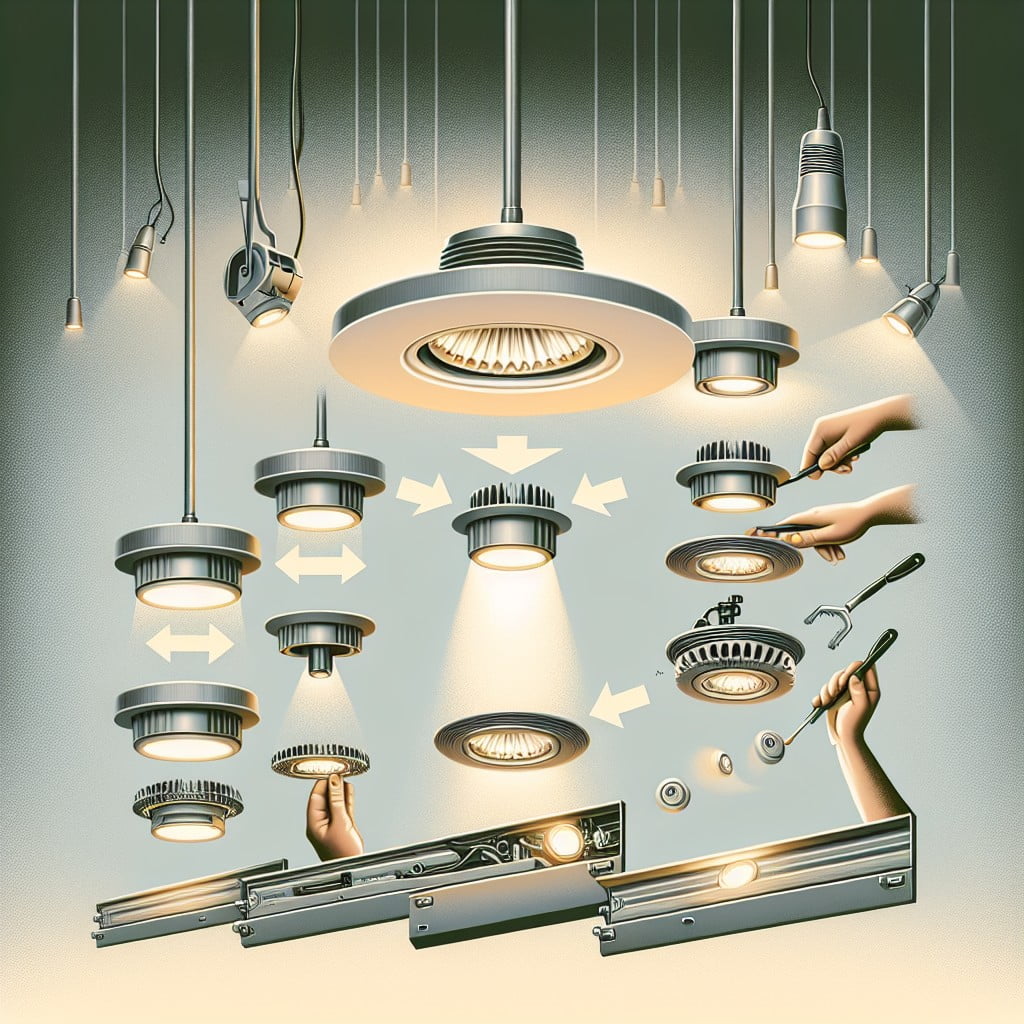
The Can Converter Kit is a revolutionary tool that makes converting recessed lights to track lights a feasible DIY project. It replaces the original housing of recessed cans without disturbing the ceiling.
Here are the key aspects:
- Versatility: The kit adapts to fit a wide variety of recessed can sizes, from 4 to 6 inches, hence catering to different needs.
- Ease of Installation: With minimal tool requirements, the kit eliminates the need for a costly and messy remodel, simplifying the process substantially.
- Durability: This robust kit maintains the integrity of your lighting setup, providing an efficient and long-lasting solution.
- Space-saving: It occupies minimal ceiling space, an important consideration for rooms with limited headroom.
- Adaptability: It works well with different pendant styles, chandeliers, and track lighting, allowing creativity and personal preference in light choice.
- Energy Efficiency: When paired with LED track lighting, this product can lead to significant energy savings.
This kit empowers homeowners to update and diversify their lighting configuration without professional assistance, an often costly endeavor. Keep in mind it’s important to follow the instructions strictly for a seamless and successful transformation.
Examining Different Can Converter Kit Options: R1, R4, and R56
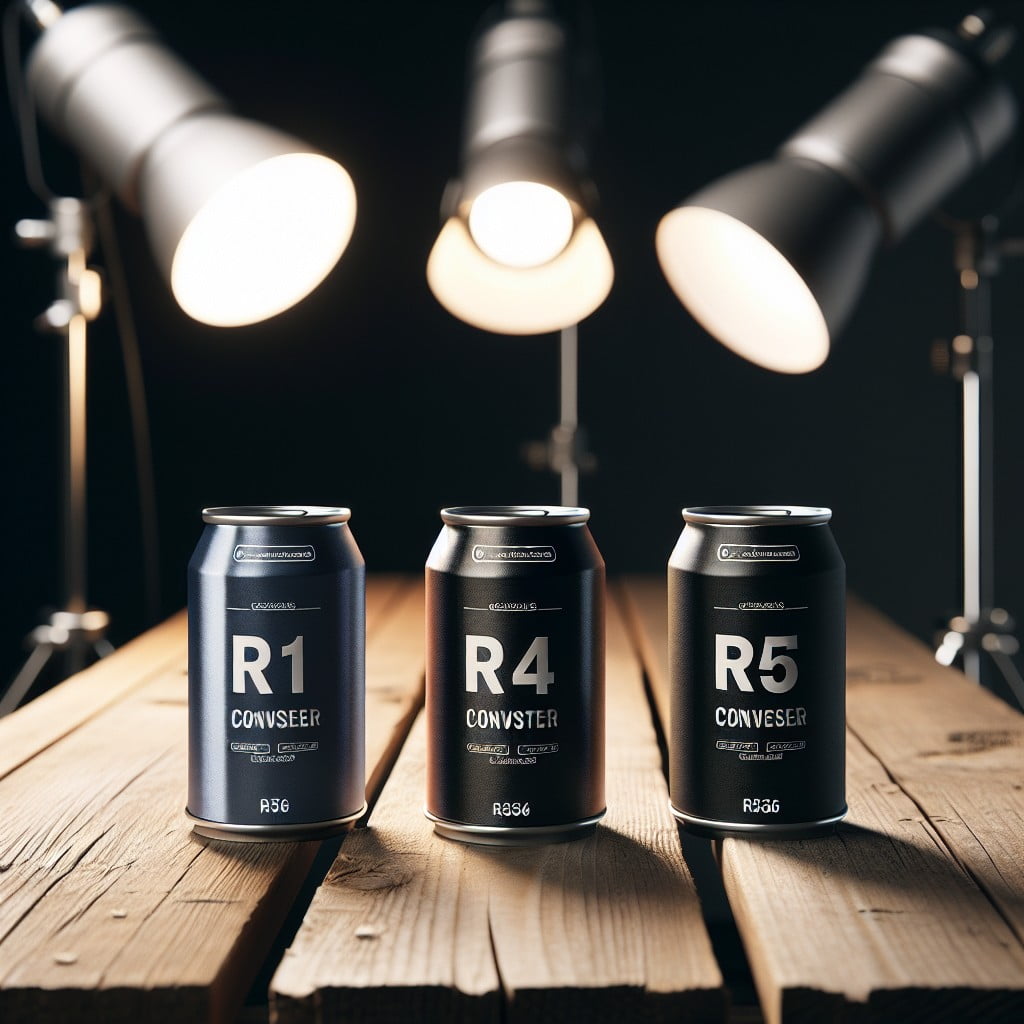
The R1, R4, and R56 are among the most popular options available in can converter kits. Although these kits share the common purpose of enabling can-to-track light conversion, each provides unique features that distinguish them.
The R1 kit is suitable for 4-inch recessed cans and works well with a variety of trim styles. It features an adjustable bar system and can support weights of up to 50 lbs. Hence, it’s an efficient choice for lightweight track lighting.
The R4 kit designed for 5 and 6-inch cans has similar features as the R1 but can handle fixtures heavier by another 15 lbs. Thus, the R4 is excellent for mid-weight track lighting.
The R56, compatible with 5 to 6-inch recessed cans, stands out for its impressive weight tolerance; it can support weights reaching up to 80 lbs. Therefore, it’s the go-to choice for heavy-duty track lighting.
While deciding between these options, keep in consideration the size of the existing cans, the type and weight of track lights, as well as the design aesthetics. Leveraging these kits can effectively transition your lighting from recessed can to track, elevating both the function and style of your space.
Exploring Track Type Options in Convert Recessed Light to Track Light
When undertaking a conversion project, the choice of track type significantly influences the functionality and ambiance. Predominantly, there are three models of track lights: linear, monorail, and cable.
1. Linear Track Lights: As the most common type, these often take the form of straight lines but can link together to create unique shapes. Linear tracks are versatile, highly adaptable, and blend seamlessly into most decor styles.
2. Monorail Track Lights: These are flexible systems that allow for dynamic and intricate patterns, enhancing your space’s visual appeal. Perfect for settings with a creative or unconventional touch.
3. Cable Track Lights: Potentially the most flexible of the bunch, cable systems use thin metal wires to hold the lights. They provide excellent light dispersal over large areas and are perfect for high or vaulted ceilings.
The decision should be based on your lighting goals, aesthetic preferences, and the existing set-up of the home. On selection, consider factors like flexibility, brightness control, and design coherence.
Calculating the Cost Savings of Converting Recessed Lights to Track Lights
Upon examining the financial aspect, it’s crucial to note that upfront costs for track lighting may be marginally higher. Yet, long-term savings offer an alternative perspective. Consider the efficiency of LEDs often used in track lights. They last significantly longer, reducing replacement costs. Simultaneously, they use less electricity compared to old recessed light bulbs, which can lower your utility bills.
In contrast, traditional recessed lights may require frequent bulb changes and higher energy consumption. Hence, over time, expenses can accumulate.
Additionally, consider indirect cost savings related to the functionality factor. Track lights offer versatility to highlight specific areas, potentially reducing the necessity for additional light fixtures. The ability to reposition and direct illumination implies a potential reduction in the number of light sources needed, leading to further savings.
However, individual circumstances will play a significant role in precisely how much is saved. Factors such as property size, the number of installations, specific lighting needs, and regional electricity rates will all contribute to the specific financial outcome.
How Track Lights Improve Lighting Quality
Track lights, unlike recessed lights, offer unparalleled flexibility. With its adjustable heads, each spotlight can be directed to spotlight specific areas or features in your space, such as art, furniture, or architectural details. This significantly enhances the illumination quality, ensuring that no area is left inadequately lit.
Moreover, track lights use less energy, especially when paired with LED bulbs. That means brighter lights using less power, resulting in noteworthy energy efficiency. This is a fundamental advantage for homeowners seeking to cut back on their energy expenditure.
Lastly, track lighting is adaptive. With its assortment of fitting options, colors, and designs, it accommodates various aesthetics and functions. Track lighting can be seamlessly integrated into a kitchen, a living room, or even a bathroom, improving the area’s lighting quality while adding to the overall design. This adaptability ensures an upgrade to your home’s lighting and its aesthetic appeal all in one go.
Exploring the Potential of Track Lighting With Recessed Can Converters
Choosing to enhance your space with track lighting using recessed can converters offers substantial advantages. First, it broadens the range of illumination. Unlike fixed, recessed downlights, track lights can be adjusted to spotlight any corner of your room, emphasizing artwork, décor or architectural features.
Next, it allows personalization. This flexible lighting solution comes in various designs and styles. You can select one that complements your interior design, painting a more cohesive look in your living area. You get to decide where and what the lights focus on, changing the ambiance depending on occasion or mood.
Finally, it brings efficiency. Track lighting, especially when utilizing LED light bulbs, consumes less power than traditional lighting options, reducing your energy consumption. Let’s not forget the easy maintenance. By using can converters, you can fit a whole track light system into an existing fixture without structural changes. This is not only cost-effective but also saves you a lot of time.
Remember, though track lighting is a popular modern solution, it’s crucial to consider your home’s overall style and personal aesthetic preferences before going ahead with this conversion.
FAQ
Can you add lights to track lighting?
Yes, you can add lights to track lighting, provided the total wattage of fixtures remains under the maximum specified by the track, and the new heads are compatible with the track system.
Can you replace a can light with track lighting?
Yes, you can replace a can light with track lighting using a converter kit.
Can track lighting be recessed?
Yes, track lighting can be recessed, as demonstrated by innovative designs like TruTrack by PureEdge Lighting that integrate seamlessly into the ceiling.
What are the key differences between track lighting and can lighting?
Track lighting integrates linear tracks on which light fixtures are attached, offering flexibility in light direction and distribution, while can lighting, also known as recessed lighting, provides a streamlined appearance as light fixtures are mounted into the ceiling, producing focused light beams.
Is it possible to install track lighting without professional assistance?
Yes, it’s possible to install track lighting without professional assistance if you have a basic understanding of electrical work and the right tools.
Which scenarios are better suited for track lighting than can lighting?
Track lighting is preferred over can lighting in scenarios where directional lighting is needed, such as art galleries, retail stores, or kitchens where certain work areas need focus.
Recap:
